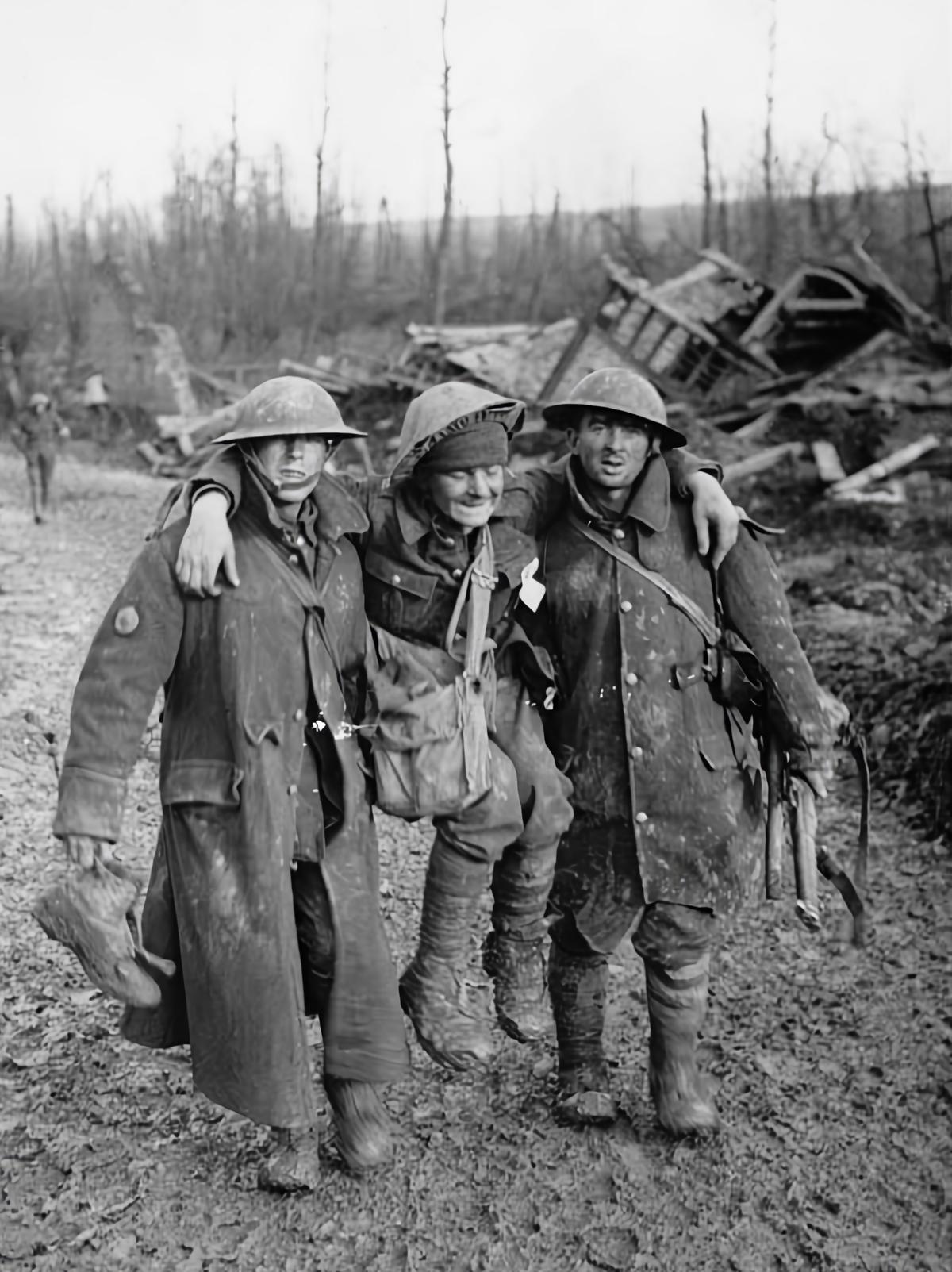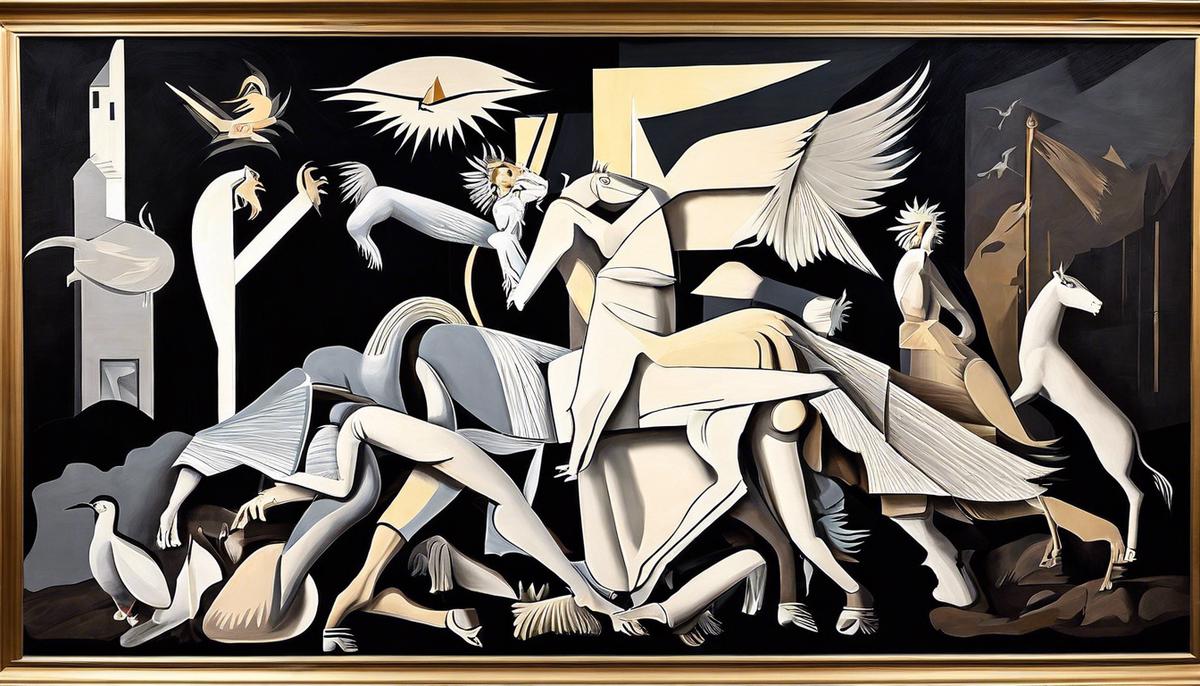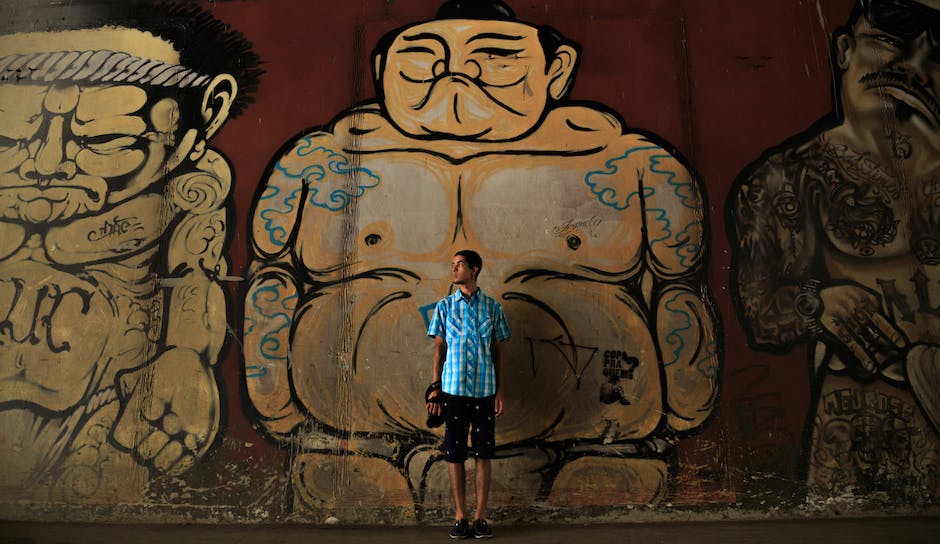In assessing the expanse of modern art, the monumental mural titled ‘Guernica’, painted by the groundbreaking Spanish artist Pablo Picasso, commands a distinct interest. Engulfed in the troubled political landscape of the Spanish Civil War and the bombing of the Guernica town, this iconic masterpiece paints a resounding tale of sorrow and upheaval. Looking at its vast dimensions and the looming figures depicted within, one begins to fathom the physical and metaphorical enormity of the mural. Down this path of exploration, this discourse navigates through the historical context which seasoned its creation, the physical characteristics that define its structure, and dives headfirst into the depths of its interpretation, brought to life by its grand scale and the creative use of space.
Historical Context of the Guernica Mural
Historical circumstances are often the catalyst for noteworthy artistic creations; Picasso’s Guernica mural is no exception. Commissioned by Spain’s Republican government for the 1937 World’s Fair in Paris, this stirring piece was an immediate and resonant response to the Luftwaffe’s bombing of Guernica, a small Basque town. The choice to make this devastating event the subject of a grand mural underscores that art does not exist in a vacuum, but rather is intrinsically linked to the realities of the society in which it is created.
On the 26th of April in 1937, during the height of the Spanish Civil War, Guernica was subjected to a brutal bombing raid by German and Italian forces in support of Nationalist leader Francisco Franco. Civilians, not military installations, were the primary targets, resulting in a horrifying scene of indiscriminate slaughter. The news of the bombing triggered a wave of international outrage, and Picasso, always political in his artistry, seized upon this moment to create a biting critique of the brutality and inhumanity of war.
Guernica stands as one of the most masterful anti-war statements in artistic history, born out of a horrific historical event. Picasso’s mural brings us face-to-face with the cruel realities of war, powerfully underscoring the human cost of political conflict. As such, it serves as an enduring testament of the value and power of art as a tool for socio-political commentary and critique.

Photo by libraryofscotland on Unsplash
Physical Characteristics of the Guernica Mural
The physical dimensions and composition of the Guernica mural add a profound visual impact to this critically celebrated anti-war piece. Unfurled in a sprawling canvas of 3.49 meters tall and 7.77 meters wide, the colossal size of the painting is instrumental in generating a degree of empathy from viewers, engulfing them in Picasso’s vigorous portrayal of the aftermath of the Guernica bombings.
Painted entirely in grayscale, using a palette of sombre blacks, whites, and greys, Picasso capitalised on the stark contrast facilitated by this limited colour palette to garner a deeper emotional response. The aesthetic choice of Greyscale is no accident, groomed strategically by Picasso, it acts as a visual metaphor, symbolising newspapers, and thus, disseminating the incident universally. The composition of the mural is equally striking. It has been arranged in a triptych-like formation, borrowing characteristics from this traditional format, yet diverging from it with its asymmetric properties.
Despite its harrowing context, Guernica’s physical form contains a symphony of chaos and despair, rooted firmly in the devastating reality of war. The mural’s colossal size, monochromatic palette, and chaotic composition, all work together to underscore the human tragedy of war, the enormity of its impact, and its reverberation through time. A brutal marriage of content and form, the physical properties of the Guernica mural, serve to accentuate its message, marking it as one of the most potent anti-war statements in the realm of art.

Role of Size and Dimensions in Mural’s Interpretation
The extraordinary size and dimensions of Picasso’s Guernica powerfully contribute to its interpretation. Stretching 3.49 meters in height and 7.77 meters in width, the mural engulfs its spectators into the tragic scene it depicts. The overwhelming magnitude, unusual for a canvas, engenders an immersive experience, compelling viewers to confront its disturbing truth. The horrifying spectacle, too large to be circumvented or ignored, creates an intense emotional response, fully engaging viewers in its narrative. It incessantly confronts them with the stark realities of war, a strategy Picasso employed to amplify its disquieting impact.
Moreover, the mural’s expansive breadth allows Picasso to utilise space in a few dynamic ways. It aids in manifesting chaotic scenes spread across a broad spectrum, mirroring the vast reach and destruction of war. Space is used to accommodate numerous disjointed images of suffering, showcasing varied yet interconnected aspects of war – broken bodies, shattered homes, and teeming fear and chaos. Presenting an episodic depiction of horror, the panorama invites viewers to navigate from one gruesome scene to another, echoing the dizzying, disorienting essence of war.
Contrasting starkly to its colourful contemporaries, Picasso’s choice to render Guernica in grayscale further helps underscore the morbidity and sombreness of war. Besides casting the mural in a newsreel-like authenticity, resonating with the international media representations of the Guernica bombing in the 1930s, it reassures that none of the horrific elements is sugarcoated with pleasing colour. The monochromatic palette eliminates distractions, directing viewers towards the intended central theme – unveiled horror and gross reality of war. The bleak tones also serve as a symbol capturing the essence of the trauma – void of vibrance, filled with despair, identical to war.
In summary, the physical properties of Picasso’s Guernica – its monumental size, complex composition, and opted monotony of colours – wonderfully lend to a deeper interpretation. The mural’s grand scale incites emotional stirring while its wide canvas manifests the sprawling horror of war. The grayscale adopted aids to strip down the brutalities of conflict to their unembellished truth, captivating the audience with the grim element of war Picasso aimed to convey. His technical choices in size, structure, and colour palette amplify the disconcerting narrative of the mural, drawing spectators closer to the reality of war and creating a deeply impactful visual commentary.

Thus, it can not be overstated how ‘Guernica’ is unprecedented in its ambitious scale, meticulous detailing and the stark portrayal of wartime devastations. It transcends its physical dimensions to grab hold of every viewer, leaving an indelibo crayon mark of Picasso’s artistic genius and the tumultuous historical age it originates from. Just as the mural’s vast size was pivotal in capturing the enormity of the tragedies it represents, its exploration lends an insight into how such physical parameters influence the perception and interpretation of great works of art. Each line, each stroke – fused with the echoes of a devastating episode of history- propounds the inherent power of art. ‘Guernica’ stands as a testament to this, wallowing in its profound size and whispering heartrending stories through every inch of its monumental canvas.






















